- afrikanisch
- Arabisch
- Weißrussisch
- bulgarisch
- chinesisch
- Niederländisch
- Englisch
- finnisch
- Französisch
- Deutsch
- griechisch
- ungarisch
- Indonesisch
- irisch
- Italienisch
- japanisch
- Koreanisch
- lateinisch
- malaiisch
- mongolisch
- Portugiesisch
- Russisch
- serbisch
- Spanisch
- Schwedisch
- Thai
- Türkisch
- ukrainisch
- Usbekisch
- Vietnamesisch
Precision-Engineered Automobile Roof & Headliner Systems
Precision-Engineered Automobile Roof & Headliner Systems
The Crucial Role of Advanced Manufacturing in Automobile Roof Production
The automobile roof, particularly the headliner component, is far more than a mere aesthetic interior element. It serves critical functions related to noise, vibration, and harshness (NVH) mitigation, thermal insulation, passenger safety, and overall cabin acoustics. In the rapidly evolving automobile manufacturing industry, the demand for sophisticated, lightweight, and high-performance automotive headliners necessitates advanced production methodologies. This article delves into the intricacies of modern automobile roof manufacturing, focusing on the innovative Wet Method Line (PU Glue Rolling Process) for automotive headliners, and exploring its profound impact on vehicle design, performance, and efficiency.
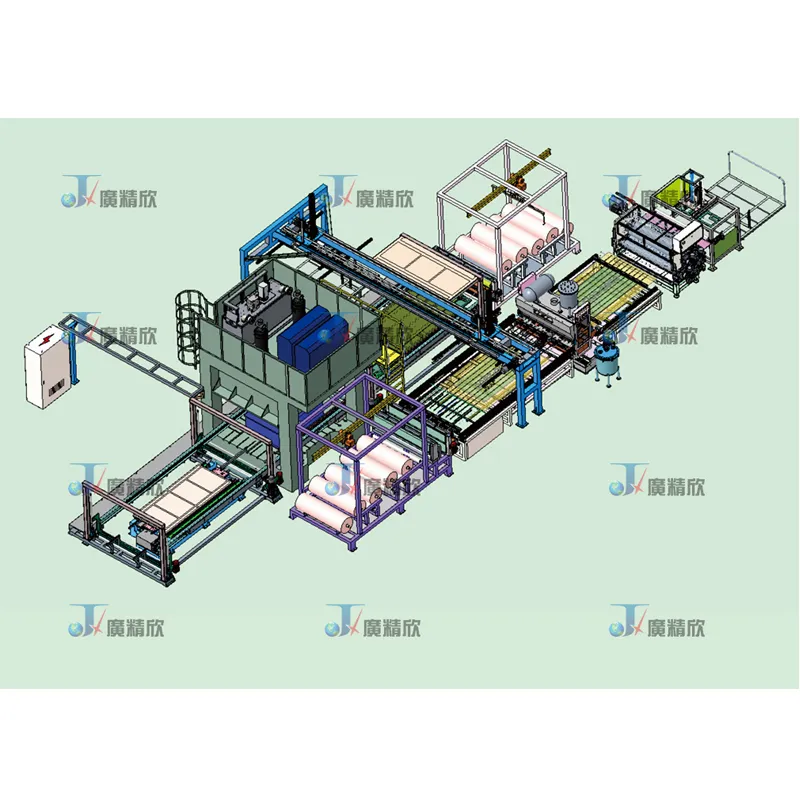
As automotive original equipment manufacturers (OEMs) and Tier 1 suppliers push the boundaries of vehicle design, the humble automobile roof headliner has transformed into a complex, multi-functional system. Modern headliners integrate features like overhead consoles, lighting, sunroof mechanisms, and even advanced sensor arrays, all while maintaining strict standards for safety and aesthetics. The manufacturing processes must therefore be capable of delivering precision, durability, and material versatility.
Industry Trends and Market Dynamics in Automotive Headliner Production
The automobile manufacturing industry is currently shaped by several megatrends impacting automobile roof and headliner production:
- Lightweighting: With stringent fuel efficiency standards and the rise of electric vehicles (EVs), reducing vehicle weight is paramount. Headliners are increasingly incorporating lighter materials such as recycled PET fibers, natural fiber composites, and expanded polypropylene (EPP) or expanded polystyrene (EPS) cores.
- Enhanced NVH Performance: Passenger comfort remains a key differentiator. Advanced acoustic properties are achieved through multi-layer constructions, optimized foam densities, and engineered fabric laminations.
- Sustainability: A growing focus on eco-friendly materials, reduced VOC (Volatile Organic Compound) emissions, and energy-efficient manufacturing processes. PU glue rolling, when utilizing water-based or low-VOC polyurethane adhesives, aligns well with this trend.
- Interior Personalization and Premiumization: Consumers demand higher quality finishes and unique interior designs. This translates to a wider variety of surface materials (e.g., Alcantara, premium textiles) and complex geometries for headliners.
- Integration of Technology: The headliner is becoming a hub for integrated electronics, including advanced lighting systems, capacitive touch controls, and sensory features for autonomous driving systems.

These trends collectively drive the need for sophisticated and flexible manufacturing lines that can handle diverse materials, maintain high quality, and optimize production efficiency for automotive headliner components.
Automobile Headliner Wet Method Line (PU Glue Rolling Process)
Our Automobile Headliner Wet Method Line, leveraging the PU Glue Rolling Process, represents the pinnacle of modern automotive headliner manufacturing technology. This system is designed for high-volume, precision lamination of various materials used in the production of automobile roof components. The wet method ensures superior adhesive distribution and strong, durable bonds, crucial for the long service life of automotive interior parts.

The process is particularly adept at handling complex material stacks, including decorative fabrics, foam layers for acoustic and thermal insulation, and rigid or semi-rigid substrate materials. The precise application of polyurethane (PU) adhesive via a rolling system minimizes waste and ensures consistent lamination quality across large surface areas.
Detailed Process Flow of Automobile Headliner Production
The manufacturing of a high-quality automobile roof headliner using the Wet Method Line involves several meticulously controlled stages:
- Material Preparation & Unwinding:
- Substrate Materials: Typically a rigid or semi-rigid composite board (e.g., fiberglass, recycled paperboard, natural fiber reinforced thermoplastics). These are unwound from rolls or fed as pre-cut sheets.
- Foam Layers: Acoustic and thermal insulation foams (e.g., PU foam, PE foam) are prepared and unwound.
- Surface Fabric: Decorative textile layers (e.g., woven fabrics, non-wovens, Alcantara) are unwound.
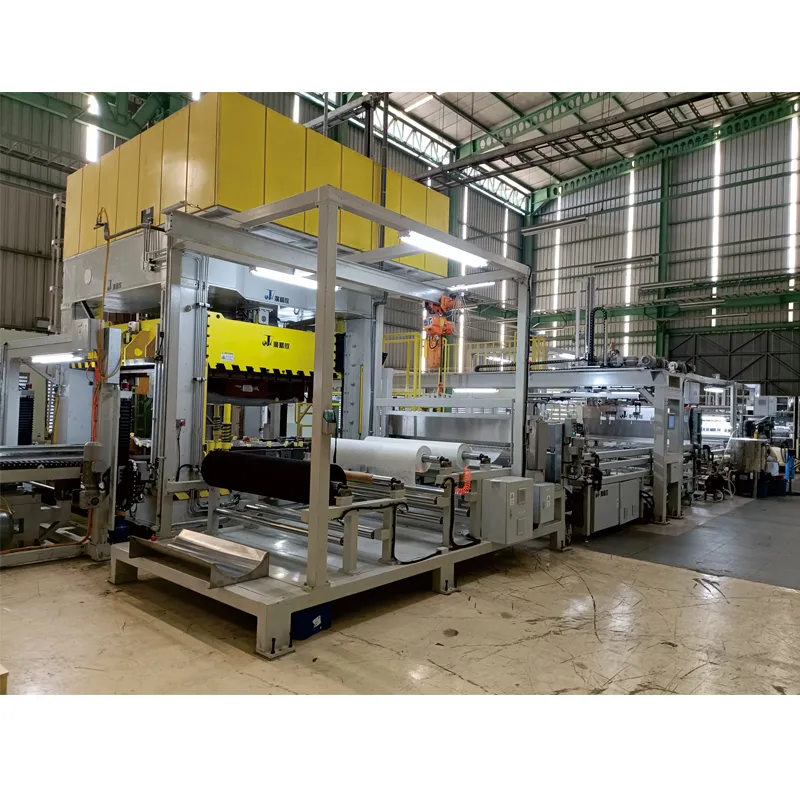
- Pre-treatment (Optional):
- Surface cleaning or corona treatment may be applied to enhance adhesion properties for specific materials.
- PU Glue Rolling (Wet Method):
- Polyurethane (PU) adhesive is precisely applied to one or both surfaces of the material layers (typically the foam or substrate) using a gravure roller or reverse roll coating system. The "wet method" implies the adhesive is applied in liquid form and cured later.
- This process ensures uniform adhesive thickness, critical for preventing delamination and maintaining aesthetic quality.
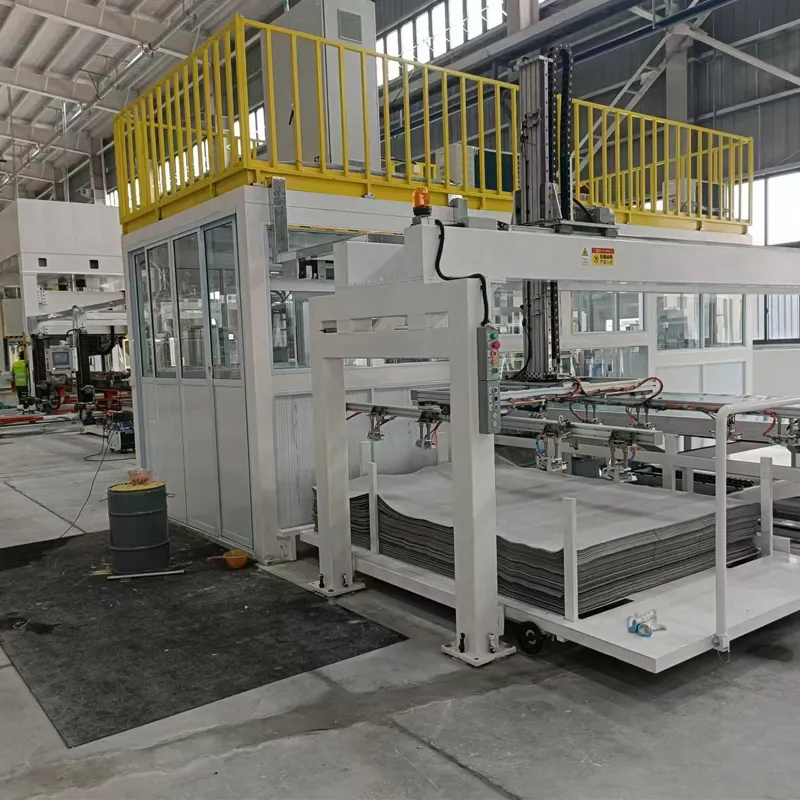
- Lamination and Bonding:
- The adhesive-coated material is brought into contact with the other layers (e.g., fabric to foam, foam to substrate) under controlled pressure and temperature.
- Rollers or platens are used to ensure complete and uniform bonding.

- Curing/Drying:
- The laminated composite then passes through a curing zone (e.g., heated tunnels, IR lamps) to fully activate and cure the PU adhesive, creating a permanent, strong bond. This stage ensures optimal adhesion strength and stability.
- Forming/Molding (Post-Lamination):
- For complex three-dimensional headliner shapes, the laminated sheet is then fed into a hot press or thermoforming mold where it is shaped under heat and pressure. This step is critical for achieving the specific contours required for various vehicle models.
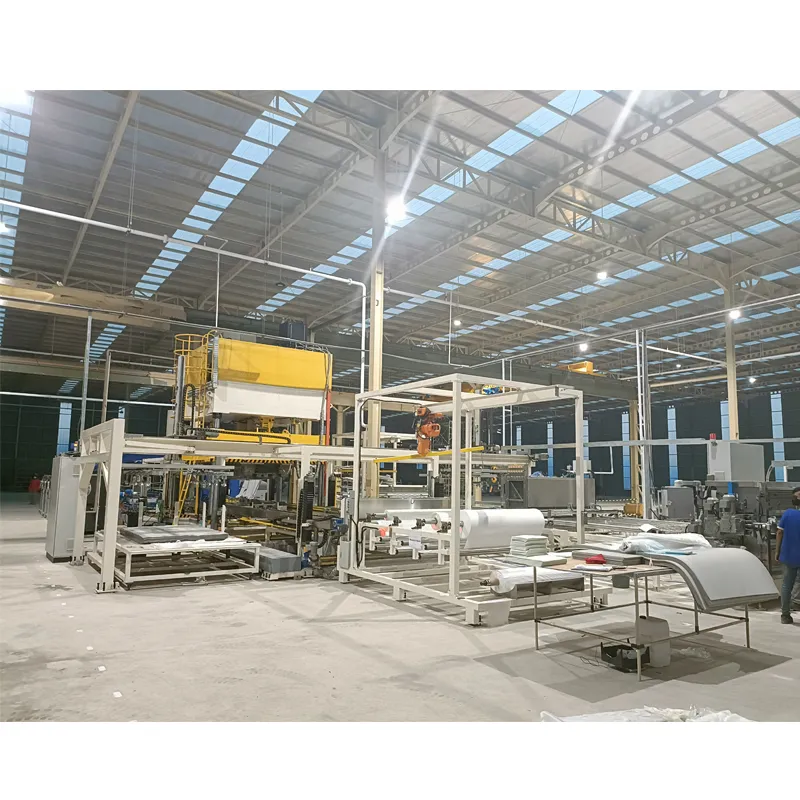
- Trimming and Finishing:
- The formed headliner is trimmed to final dimensions using CNC cutters, waterjet cutting, or laser cutting systems. Openings for lights, handles, and other fixtures are precisely cut.
- Quality Control & Inspection:
- Each finished headliner undergoes rigorous quality checks for dimensional accuracy, aesthetic appearance, bond strength (e.g., peel tests), and acoustic performance. Adherence to standards like ISO 9001 for manufacturing and specific automotive OEM material standards (e.g., Ford WSS-M11P22-C, GM GMW3235) is crucial.
The Wet Method Line ensures high-quality, durable components with excellent material integrity and aesthetic finish, essential for the demanding automotive environment.
Technical Specifications and Performance Parameters
Our Automobile Headliner Wet Method Line is engineered for robust performance and operational efficiency, meeting the stringent requirements of the automobile manufacturing industry. Key specifications include:
| Parameter | Specification |
|---|---|
| Production Speed | Up to 15-25 meters/minute (variable based on material) |
| Material Width Capacity | 1500mm - 3000mm (customizable) |
| Adhesive Type | Water-based Polyurethane (PU) Glue, Solvent-free PU |
| Lamination Accuracy | ±1mm across full width |
| Heating System | Electric, Thermal Oil, or Steam (customer specified) |
| Control System | PLC with HMI Touch Screen (Siemens/Allen-Bradley options) |
| Power Consumption | Varies with configuration, typically 80-150 kW |
| Operating Temperature Range | Ambient to 200°C (for drying/curing zones) |
| Testing Standards | CE certified, ISO 9001 compliant manufacturing. Material tests according to ASTM D903 (peel strength), ISO 105 B02 (color fastness), Automotive OEM specific standards. |
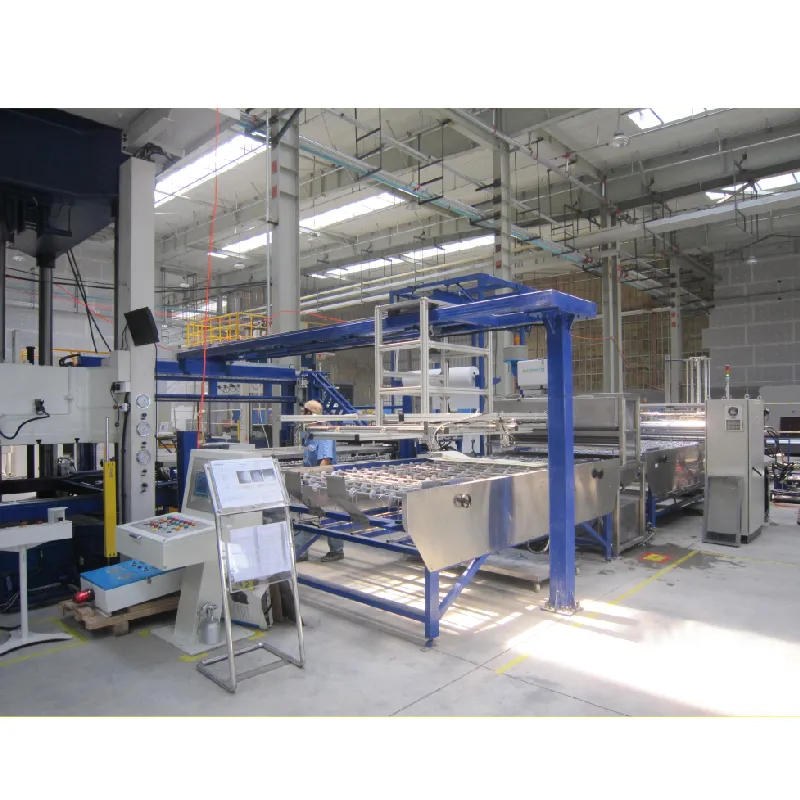
The integrated PLC system provides precise control over all process parameters, ensuring consistent quality and enabling quick adjustments for different product specifications. This contributes significantly to the reliability and longevity of the automobile roof headliner.
Technical Advantages in Automobile Headliner Production
The Wet Method PU Glue Rolling Process offers distinct advantages for producing superior automobile roof components:
- Superior Bond Strength: PU adhesives are known for their excellent adhesion to diverse substrates and their flexibility, providing a robust, long-lasting bond that resists delamination, even under extreme temperature fluctuations and vibrations inherent in a vehicle.
- Enhanced Acoustic Performance (NVH): The uniform and continuous adhesive layer, combined with optimal material selection, significantly improves the acoustic dampening properties of the headliner, reducing cabin noise and improving overall ride comfort.
- Thermal Insulation: Effective lamination of foam layers ensures superior thermal insulation, contributing to cabin climate control and energy efficiency.
- Materialvielfalt: The line can process a wide array of materials, from natural fibers and recycled composites to advanced synthetic fabrics and various foam types, offering flexibility for product design and sustainability goals.
- Aesthetic Quality: Precise adhesive application prevents bleed-through or uneven surfaces, ensuring a pristine finish that meets demanding automotive aesthetic standards.
- Process Efficiency and Cost-Effectiveness: High-speed lamination, reduced adhesive waste, and minimal need for rework contribute to a lower overall cost of ownership and higher throughput.
- Environmental Compliance: The use of water-based or solvent-free PU adhesives significantly reduces VOC emissions, aligning with global environmental regulations and promoting a healthier working environment.
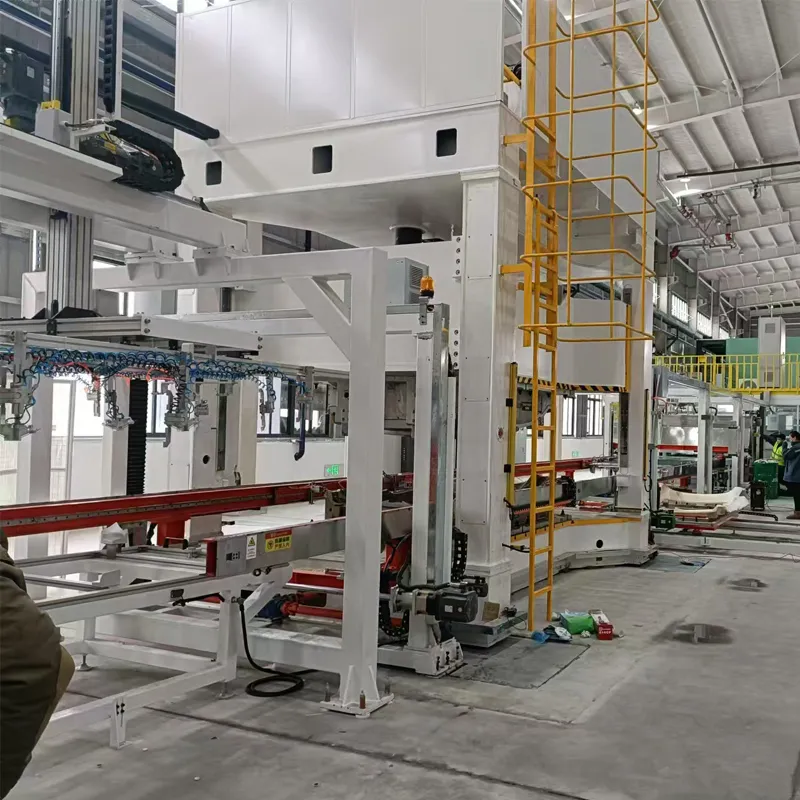
These advantages collectively position our solution as a leading choice for manufacturers aiming to produce high-performance, durable, and aesthetically superior automotive headliner components.
Application Scenarios and Target Industries
The Automobile Headliner Wet Method Line is specifically engineered for the production of interior components across the entire automobile manufacturing industry. Our primary target clients are:
- Automotive Tier 1 Suppliers: Companies specialized in manufacturing and assembling interior modules for major OEMs. These suppliers demand high-volume, consistent quality, and process flexibility to meet diverse OEM specifications.
- Automotive OEMs: In-house manufacturing divisions of vehicle manufacturers producing their own specialized interior components, particularly for premium or niche models.
- Commercial Vehicle Manufacturers: Producers of trucks, buses, and specialized vehicles where durability, acoustic performance, and thermal insulation are critical for passenger and driver comfort.
- Electric Vehicle (EV) Component Manufacturers: As EVs prioritize lightweighting and enhanced cabin acoustics due to the absence of engine noise, advanced headliner solutions are increasingly vital.
- Aerospace and Rail Interior Manufacturers: While primarily designed for automotive, the precision lamination capabilities can be adapted for interior panel production in other transport sectors requiring similar material combinations and performance.

Typical application scenarios include the lamination of composite substrates with decorative fabrics and foam layers for car, truck, and bus headliners, trunk linings, door panels, and pillar trims, all contributing to the overall integrity and finish of the automobile roof system.
Vendor Comparison: Wet Method vs. Other Technologies
When selecting a lamination solution for automobile roof headliners, manufacturers often weigh the benefits of various methods. The Wet Method (PU Glue Rolling Process) offers compelling advantages over traditional dry lamination or spray adhesive techniques.
| Feature/Method | Wet Method (PU Glue Rolling) | Dry Lamination (Hot Melt Film) | Spray Adhesive |
|---|---|---|---|
| Adhesive Application | Precision roller coating, uniform film. | Pre-applied film, activated by heat. | Manual or robotic spray, less uniform. |
| Bond Strength & Durability | Excellent, long-term, high resistance to heat/moisture. | Good, but can be susceptible to delamination with certain materials. | Variable, often lower peel strength, prone to aging. |
| Material Versatility | High, adheres well to porous and non-porous surfaces. | Limited by film's compatibility with substrates. | Moderate, can be messy and inefficient for large areas. |
| Environmental Impact | Low VOC (water-based/solvent-free PU). | Generally low VOC, but film production has energy footprint. | Often high VOC (solvent-based), health and safety concerns. |
| Aesthetic Finish | Smooth, consistent, no "orange peel" effect. | Can show film texture or uneven melting. | Risk of uneven coating, visible adhesive lines. |
| Processing Speed | High (continuous process). | Moderate to high. | Low (batch or semi-continuous). |
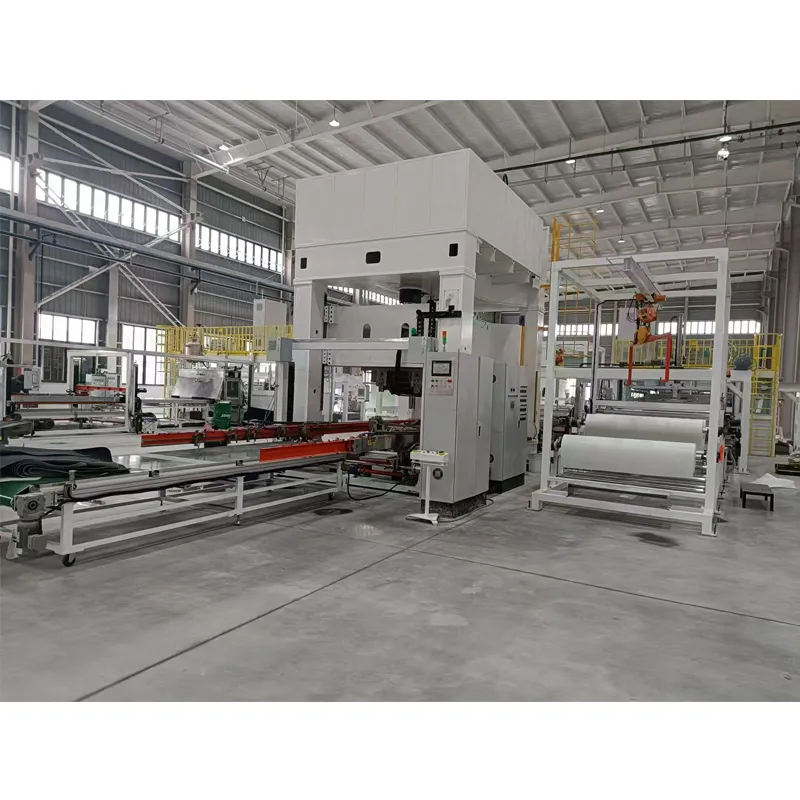
The superior characteristics of the Wet Method, particularly regarding bond integrity and material flexibility, make it the preferred choice for high-quality automotive headliner production where performance and longevity are paramount.
Customized Solutions for Diverse Automobile Roof Requirements
Recognizing the unique demands of each automotive program and OEM, we offer highly customized solutions for our Automobile Headliner Wet Method Line. Our engineering team collaborates closely with clients to tailor the manufacturing line to specific requirements, ensuring optimal performance and seamless integration into existing production ecosystems.
- Material Flexibility: Adaptation of adhesive application systems and lamination parameters to handle novel composite substrates, specialized acoustic foams, and premium decorative fabrics.
- Line Configuration: Customization of line length, number of unwinding stations, and curing oven design to match specific production volumes, space constraints, and energy efficiency targets.
- Automation Integration: Options for integrating advanced automation features such as automatic splicing, robotic material handling, inline quality inspection systems (e.g., vision systems), and connection to MES (Manufacturing Execution Systems).
- Process Parameter Optimization: Fine-tuning of adhesive application rates, lamination pressure, temperature profiles, and line speed to achieve precise bonding characteristics for different automobile roof designs.
- Safety and Compliance: Ensuring that all customized lines meet relevant international safety standards (e.g., CE, OSHA) and specific environmental regulations for adhesive emissions.

Our expertise in engineering and process optimization allows us to deliver bespoke solutions that provide a competitive edge in the highly demanding automobile manufacturing industry.
Application Case Studies & Customer Experience
Our Automobile Headliner Wet Method Line has consistently delivered measurable improvements for our global partners in the automobile manufacturing industry.
Case Study 1: Global Tier 1 Supplier Achieves 15% NVH Improvement
A major Tier 1 automotive interior supplier, producing headliners for a premium European OEM, faced challenges in meeting stringent NVH targets. Their existing dry lamination process resulted in inconsistent adhesive distribution, leading to minor delamination points that compromised acoustic performance. By implementing our Wet Method Line, the client achieved a 15% improvement in overall sound absorption coefficients (as per ISO 10534-2 testing) for their automobile roof headliners. This was directly attributed to the uniform and robust bonding provided by the PU glue rolling process, enabling the full acoustic potential of their multi-layer composite to be realized.
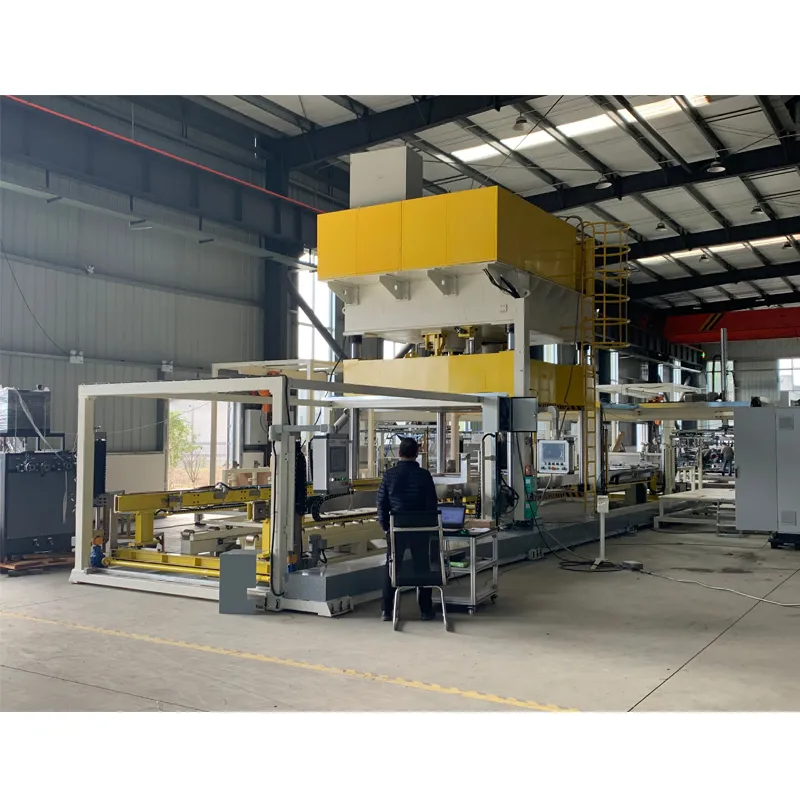
Case Study 2: North American EV Manufacturer Boosts Production Efficiency by 20%
An emerging electric vehicle manufacturer in North America sought to scale up production of their unique lightweight automobile roof headliners, which combined recycled PET fabric with a natural fiber composite substrate. Their previous batch-oriented process was a bottleneck. Our customized Wet Method Line, integrated with automated material handling and high-speed PU glue rolling, increased their headliner production throughput by over 20% while simultaneously reducing adhesive consumption by 10%. The switch to water-based PU glue also allowed them to significantly lower VOC emissions, aligning with their corporate sustainability goals and enhancing worker safety.
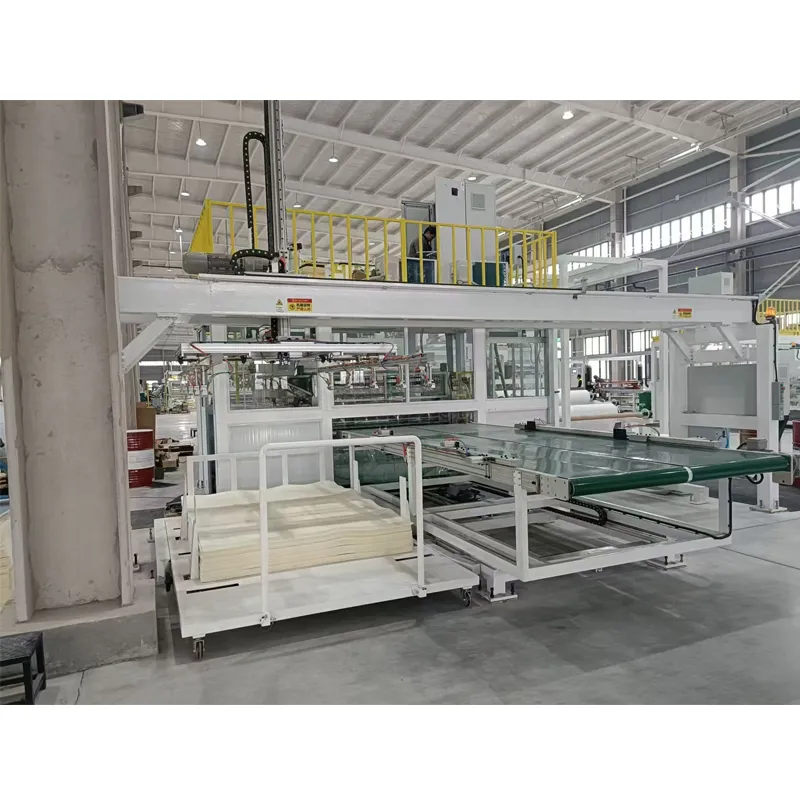
Authoritativeness and Trustworthiness
Our commitment to excellence is underpinned by robust certifications, extensive industry experience, and transparent operational practices.
- Certifications: Our manufacturing facilities and processes are ISO 9001:2015 certified, guaranteeing adherence to international quality management standards. Our machinery also carries CE certification, ensuring compliance with European health, safety, and environmental protection requirements.
- Industry Experience: With over 20 years of dedicated service to the automobile manufacturing industry, we have established ourselves as a trusted partner for leading global OEMs and Tier 1 suppliers.
- Technological Leadership: Our R&D continually invests in developing advanced lamination solutions, drawing upon deep expertise in material science, adhesive chemistry, and automation engineering.
- Rigorous Testing: All equipment undergoes extensive factory acceptance testing (FAT) and site acceptance testing (SAT), including performance validation against specified production metrics and quality standards. Comprehensive data logs of adhesive application consistency, temperature profiles, and speed parameters are provided to clients.

FAQ Module
- Q: What types of substrates can your Wet Method Line process for automobile roof headliners?
A: Our lines are versatile and can handle a wide range of substrates, including fiberglass mats, recycled paperboard, natural fiber composites, EPP/EPS cores, and various thermoplastic sheets. - Q: What are the environmental benefits of using the PU Glue Rolling Process?
A: By utilizing water-based or solvent-free polyurethane adhesives, our process significantly reduces VOC emissions compared to solvent-based systems, contributing to a healthier environment and compliance with stricter regulations. - Q: Can the line be integrated with existing factory automation systems?
A: Yes, our control systems are designed for seamless integration with client MES (Manufacturing Execution Systems) and can be configured with various industrial communication protocols (e.g., Ethernet/IP, Profinet). - Q: What is the typical service life expected from the machinery?
A: With proper maintenance, our lines are engineered for a service life exceeding 15-20 years, ensuring a high return on investment for our clients.
Lead Time & Fulfillment
Standard lead time for our Automobile Headliner Wet Method Line is typically 18-24 weeks from confirmed order to factory acceptance testing (FAT), depending on the level of customization. Project fulfillment includes comprehensive engineering, manufacturing, FAT, shipping, on-site installation, and site acceptance testing (SAT).
Warranty Commitments
We provide a standard 12-month warranty on all mechanical and electrical components from the date of site acceptance. Extended warranty options and service contracts are available to ensure continuous operational excellence.
Customer Support & After-Sales Service
Our dedicated global support team offers 24/7 technical assistance. Services include remote diagnostics, on-site troubleshooting, spare parts supply, and preventative maintenance programs. We also provide comprehensive operator training and process optimization consultancy to maximize your investment in automotive headliner production.
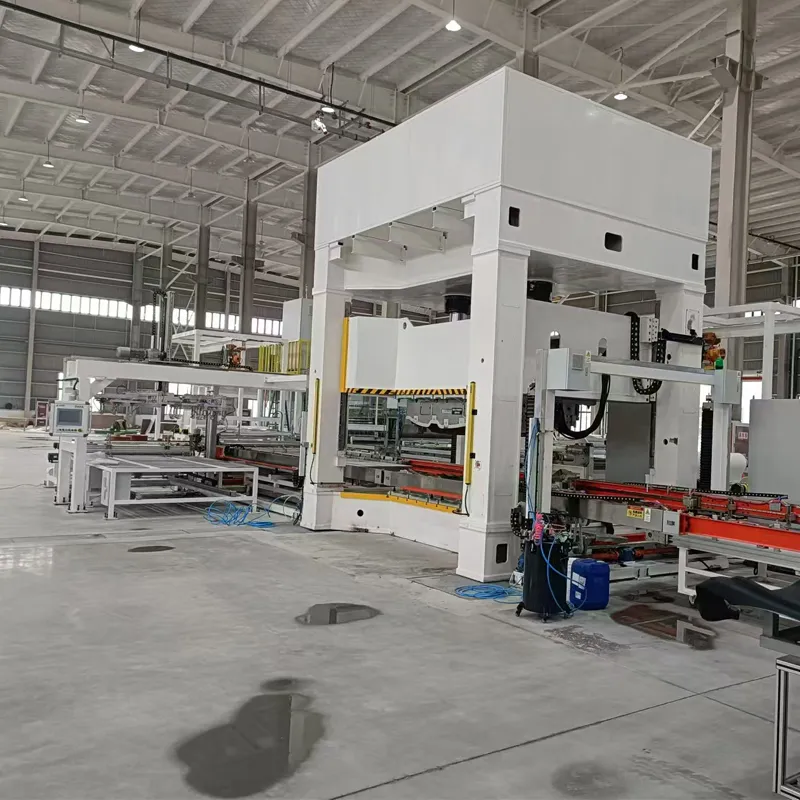
Conclusion
The future of the automobile manufacturing industry, particularly in interior components like the automobile roof headliner, hinges on advanced manufacturing processes that deliver unparalleled quality, efficiency, and sustainability. Our Automobile Headliner Wet Method Line (PU Glue Rolling Process) stands as a testament to this evolution, offering a robust, precise, and environmentally conscious solution for producing high-performance automotive headliners. By investing in this cutting-edge technology, manufacturers can ensure superior product quality, enhance operational efficiency, and maintain a competitive edge in a dynamic global market.
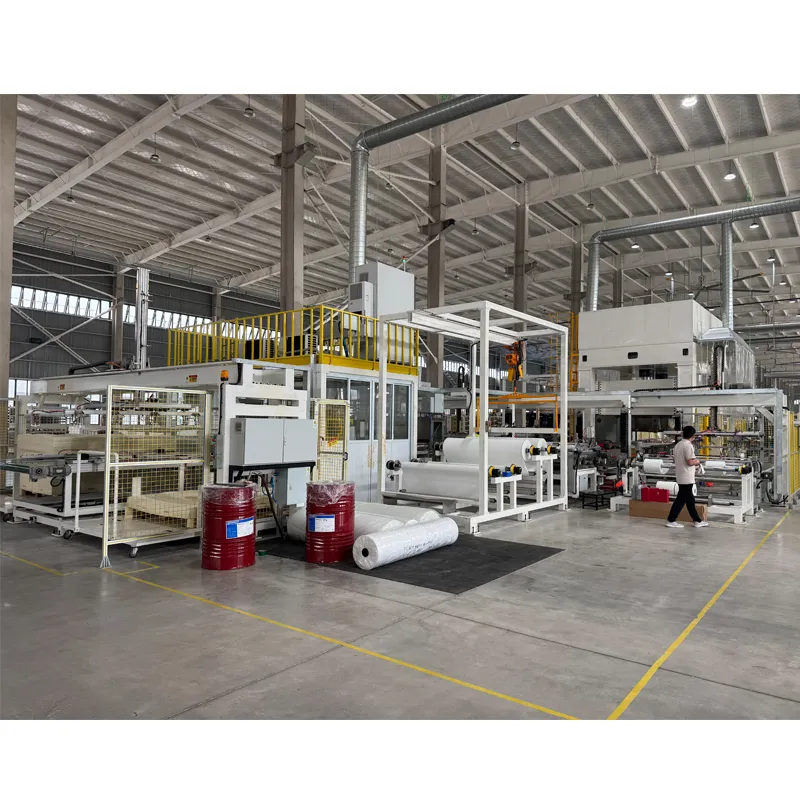
References
- ISO 9001:2015 - Quality management systems — Requirements. International Organization for Standardization.
- ASTM D903 - Standard Test Method for Peel or Stripping Strength of Adhesive Bonds. ASTM International.
- ISO 10534-2:1998 - Acoustics - Determination of sound absorption coefficient and impedance in impedance tubes - Part 2: Transfer-function method. International Organization for Standardization.
- Automotive News. (Current Year). Market Data & Analysis: Global Automotive Production Trends.
- Journal of Composites and Advanced Materials. (Recent Volume). Research on Natural Fiber Composites for Automotive Interior Applications.
- Society of Automotive Engineers (SAE) International. (Various Publications). Standards for Automotive Interior Trim Materials and Testing.



